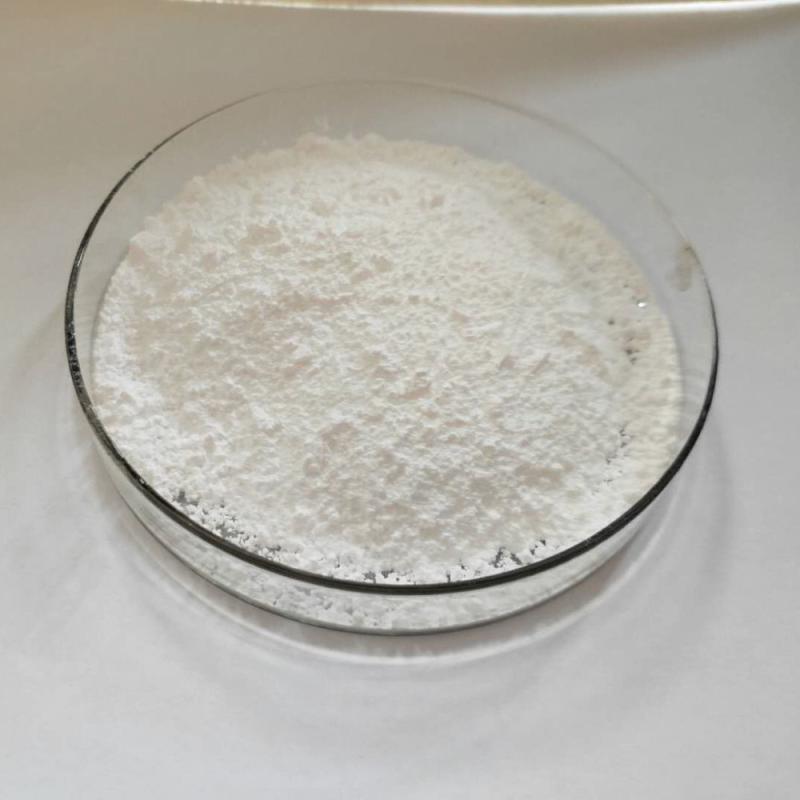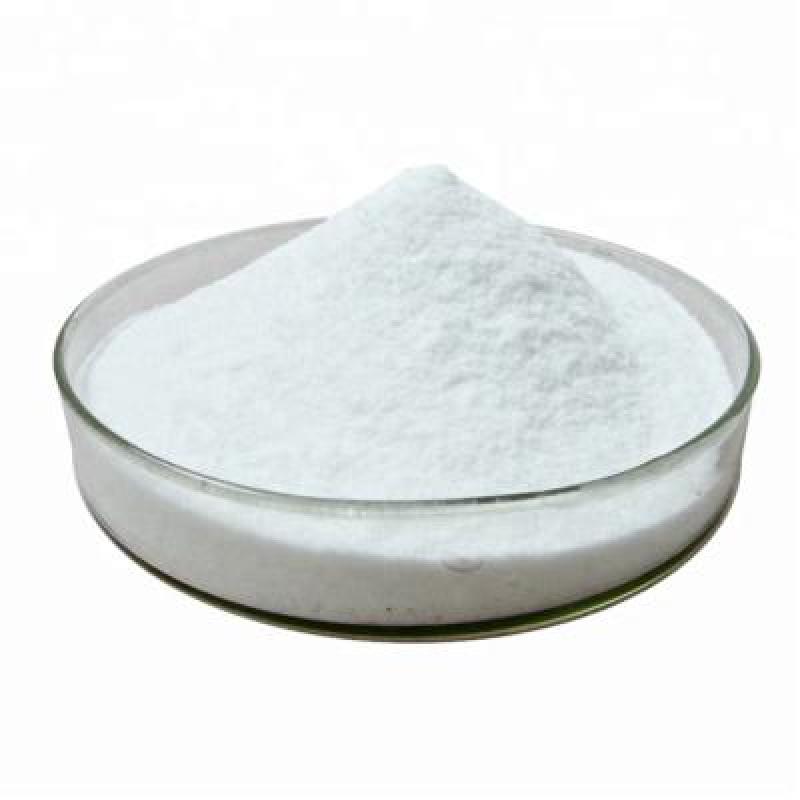Common name: TebuconazoleChemical name:1-(4-Chlorophenyl)-4,4-dimethyl-3-(1,2,4-triazole-1-yl-methyl)pentane-3-olMolecular formula: C16H22ClN3OStructural formula: Molecular weight: 307.82CAS No. : 80443-41-0Product description:Tebuconazole is a kind of high efficiency, broad spectrum, internal absorption triazole bactericidal pesticide, with three functions of protection, treatment, eradication, wide bactericidal spectrum, long duration of efficacy. It was found that tebuconazole, like all triazole fungicides, could inhibit the biosynthesis of ergosterol from fungicide.
Contact Now
AzaconazoleChemical name:1-[[2-(2,4-dichlorophenyl)-1,3-dioxolan-2-yl]methyl]-1,2,4-triazole Molecular formula: C12H11Cl2N3O2Structural formula:Molecular weight: 300.1406CAS No. : 60207-31-0Physical and chemical properties:Density: 1.51 g/cm3Melting point: DHS 112.6 CBoiling point: 460.7ºC at 760 mmHgFlash: DHS 232.4 CRefractive index: 1.658Storage conditions: 0-6ºC
Contact Now
Product description:Tebuconazole is a sort of high performance, large spectrum, inner absorption triazole bactericidal pesticide, with three capabilities of safety, remedy, eradication, huge bactericidal spectrum, long length of efficacy. it became located that tebuconazole, like several triazole fungicides, could inhibit the biosynthesis of ergosterol from fungicide. tebuconazole is used as seed treatment agent and foliar spray all over the global. it has a extensive bactericidal spectrum, excessive activity and long length of efficacy.
Contact Now
Common name: EpoxiconazoleChemical name:1-[[3-(2-chlorophenyl)-2-(4-fluorophenyl)oxiran-2-yl]methyl]-1,2,4-triazole Molecular formula: C17H13ClFN3OStructural formula: Molecular weight: 329.76CAS No. : 135319-73-2Product description: Epoxiconazole is a fungicide active ingredient from the class of azoles developed to protect crops. In particular, the substance inhibits the metabolism of fungi cells infesting useful plants, and thereby prevents the growth of the mycelia (fungal cells). Epoxiconazole also limits the production of conidia (mitospores).
Contact Now
Common name: IndoxacarbChemical name:reaction mass of (S)- Indoxacarb and (R)- Indoxacarb 75:25; methyl 7-chloro-2-{(methoxycarbonyl)[4-(trifluoromethoxy)phenyl]carbamoyl}-2,5-dihydroindeno[1,2-e][1,3,4]oxadiazine-4a(3H)-carboxylateMolecular formula: C22H17ClF3N3O7Structural formula:Molecular weight: 527.83CAS No.
Contact Now
Product description:Propiconazole is a triazole fungicide, also referred to as a dmi, or demethylation inhibiting fungicide due to its binding with and inhibiting the 14-alpha demethylase enzyme from demethylating a precursor to ergosterol. with out this demethylation step, the ergosterols are not protected into the growing fungal cellular membranes, and cellular increase is stopped.Common name: PropiconazoleChemical name:1-[[2-(2,4-dichlorophenyl)-4-propyl-1,3-dioxolan-2-yl]methyl]-1H-1,2,4-triazoleMolecular formula: C15H17Cl2N3O2 Structural formula:Molecular weight: 342.22CAS No.
Contact Now
Product description:Difenoconazole, also referred to as oxadifenazole, is a triazole fungicide and a sterol demethylation inhibitor. it has the characteristics of high performance, wide spectrum, low toxicity, and low dosage. an incredible kind of triazole fungicides with strong systemic houses. by using inhibiting the biosynthesis of ergosterol in pathogenic cells, it destroys the structure and characteristic of pathogen cell membranes. it is used in fruit trees, chemicalbook greens, wheat, potatoes, beans, melons, and so on.
Contact Now
Common name: AzaconazoleChemical name:1-[[2-(2,4-dichlorophenyl)-1,3-dioxolan-2-yl]methyl]-1,2,4-triazole Molecular formula: C12H11Cl2N3O2Structural formula:Molecular weight: 300.1406CAS No. : 60207-31-0Physical and chemical properties:Density: 1.51 g/cm3Melting point: DHS 112.6 CBoiling point: 460.7ºC at 760 mmHgFlash: DHS 232.4 CRefractive index: 1.658Storage conditions: 0-6ºC
Contact Now
Common name: PropiconazoleChemical name:1-[[2-(2,4-dichlorophenyl)-4-propyl-1,3-dioxolan-2-yl]methyl]-1H-1,2,4-triazoleMolecular formula: C15H17Cl2N3O2 Structural formula:Molecular weight: 342.22CAS No. : 60207-90-1Product description:Propiconazole is a triazole fungicide, also known as a DMI, or demethylation inhibiting fungicide due to its binding with and inhibiting the 14-alpha demethylase enzyme from demethylating a precursor to ergosterol.
Contact Now
Common name: DifenoconazoleChemical name: 1-({2-[2-Chloro-4-(4-chlorophenoxy)phenyl]-4-methyl-1,3-dioxolan-2-yl}methyl)-1H-1,2,4-triazoleMolecular formula: C19H17Cl2N3O3Structural formula: Molecular weight: 406.26CAS No. : 119446-68-3Product description:Difenoconazole, also known as oxadifenazole, is a triazole fungicide and a sterol demethylation inhibitor. It has the characteristics of high efficiency, broad spectrum, low toxicity, and low dosage. An excellent variety of triazole fungicides with strong systemic properties.
Contact Now
Product description:Epoxiconazole is a fungicide active element from the magnificence of azoles evolved to defend vegetation. especially, the substance inhibits the metabolism of fungi cells infesting beneficial plants, and thereby prevents the growth of the mycelia (fungal cells). epoxiconazole also limits the producing of conidia (mitospores). epoxiconazole become introduced to the marketplace thru basf se in 1993 and can be located in many products and product mixtures concentrated on a large wide form of pathogens in various plant life.
Contact Now
It is moderately toxic to humans and animals, has no irritating effect on rabbit skin, has mild irritating effect on eyes, and is highly toxic to aquatic organisms, bees and silkworms. High insecticidal activity, is a nerve agent, pyrethroid insecticides. It is mainly used for contact killing and stomach poisoning, and has a certain repelling effect, without systemic suction and fumigation. Binding effect, long lasting effect, able to withstand rainwater leaching.
Contact Now
Structural formula:Molecular weight: 416.3CAS No. : 52315-07-8Product description:Cypermethrin (CP) is a synthetic pyrethroid used as an insecticide in large-scale commercial agricultural applications as well as in consumer products for domestic purposes. It behaves as a fast-acting neurotoxin in insects. It is easily degraded on soil and plants but can be effective for weeks when applied to indoor inert surfaces. Exposure to sunlight, water and oxygen will accelerate its decomposition.
Contact Now
Product Description:Pymetrozine is a non - cellular insecticide belonging to pyridinethimide or triazinone pesticide. Pymetrozine has tactile and endogenic activity to pests. In vegetation, it may be transported in every xylem and phloem. Therefore, it can be used as a foliar spray and soil remediation agent. Due to its correct transfer properties, newly grown branches can also be effectively covered after spraying stems and leaves.Common name: PymetrozineChemical name: (E)-4,5-Fihydro-6-methyl-4-((3-pyridinylmethylene)amino)-1,2,4-triazin-3(2H)-oneMolecular form
Contact Now
Common name: PymetrozineChemical name: (E)-4,5-Fihydro-6-methyl-4-((3-pyridinylmethylene)amino)-1,2,4-triazin-3(2H)-oneMolecular formula: C10H11N5OStructural formula:Molecular weight: 217.23CAS No. : 123312-89-0Product description:Pymetrozine belongs to the pyridine (pyridinethimide) or triazinone class of insecticides and is a non - cytocytic insecticide. Pymetrozine has a tactile effect on insect pests and internal absorption activity. In plants, it can transport in both xylem and phloem. Therefore, it can be used as foliar spray and soil treatment.
Contact Now
Usage:It's far mainly used as an insecticide for controlling aphids, leafhoppers, thrips, planthoppers and other hemiptera, coleoptera, diptera and positive lepidoptera pests on rice, veggies, fruit bushes and different vegetation. it has excessive efficiency, large-spectrum, low dosage, low toxicity, lengthy-lasting efficacy, no harm to vegetation, secure use, no move-resistance to conventional insecticides, and many others. it has outstanding systemic and osmotic consequences and is a substitute for distinctly toxic natural some other variety of phosphorus insecticides.
Contact Now
Product description:Carbendazim is a broadly used, systemic, vast-spectrum benzimidazole fungicide and a metabolite of benomyl. it is also hired as a casting worm control agent in amenity turf situations together with golf greens, tennis courts etc. and in a few international locations is licensed for that use most effective.Common name: CarbendazimChemical name: Methyl (1H-1,3-benzimidazol-2-yl)carbamateMolecular formula: C9H9N3O2Structural formula:Molecular weight: 191.19CAS No.
Contact Now
Structural formula:Molecular weight: 422.9CAS No. : 82657-04-3Physical and chemical properties:Pure for gray solid. M.p. 68 ~ 70.6℃(industrial M.P. 61 ~ 66℃), relative density 1.210 (25℃), vapor pressure 2.4×10-5Pa, flash point 165℃Content,%≥ 95Product description:Bifenthrin is a pyrethroid insecticide. It is widely used against ant infestations, including the invasive red fire ant, by influencing its nervous system. It has a high toxicity to aquatic organisms.Bifenthrin is poorly soluble in water and often remains in soil.
Contact Now
Common name: Metsulfuron-MethylChemical name: 2-(4-methoxy-6-methyl-1,3,5-triazin-2-ylcarbamoylsulfamoyl) benzoic acidMolecular formula: C14H15N5O6SStructural formula:Molecular weight: 381.36CAS No. : 74223-64-6Product description:Metsulfuron is an ultra-low dosage sulfonylurea herbicide for controlling medium-broad-leaved weeds in cereals. It can be transferred upward and downward in the plant body and used as a herbicide before and after wheat sprouts.Physical and chemical properties:The pure product is a white crystalline solid. m.p.158℃(163~166℃), vapor pressure 3.3×10-10Pa(25℃).
Contact Now
Utilization:Acetamiprid can be used to govern aphids, planthoppers, thrips and lepidoptera pests of rice, greens, fruit bushes, tea timber, and many others. at the concentration of fifty ~ a hundred mg/l, it is able to effectively control cotton aphid, vegetable aphid, peach small fit to be eaten insect, and kill eggs.Common name: AcetamipridChemical name: N-[(6-chloro-3-pyridyl)methyl]-N'-cyano-N-methyl-acetamidineMolecular formula: C10H11ClN4Structural formula:Molecular weight: 222.67CAS No.
Contact Now
Thiamethoxam is a systemic insecticide in the class of neonicotinoids. It has a broad spectrum of activity against many types of insects. Thiamethoxam can be used as a seed dresser.Thiamethoxam is a broad-spectrum, systemic insecticide, which means it is absorbed quickly by plants and transported to all of its parts, including pollen, where it acts to deter insect feeding.[citation needed] An insect can absorb it in its stomach after feeding, or through direct contact, including through its tracheal system.
Contact Now
Product description:Lufenuron is the active factor inside the veterinary flea manage remedy application, and one of the energetic elements in the flea, heartworm, ringworm and anthelmintic medicine milbemycin oxime/lufenuron (sentinel).Lufenuron is stored within the animal's body fats and transferred to adult fleas via the host's blood when they feed. adult fleas switch it to their growing eggs via their blood, and to hatched larvae feeding on their excrement.
Contact Now
Usage:Deltamethrin is a highly effective insecticide.
Contact Now


































